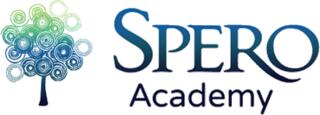
At Spero, we follow the Four Blocks Literacy Model as a framework for teaching literacy that uses multi-level, individualized instruction to allow all students – regardless of ability or developmental level – to master the basics of reading and writing.
The Four Blocks are self-selected reading, guided reading, working with words, and writing. Each block addresses one of the core components of building the context, vocabulary, and skills to be a confident reader and writer. The beauty of the Four Blocks model is that it includes opportunities to individualize instruction within each block while allowing the whole classroom to work on the same block at the same time.
Spero teachers incorporate all four blocks into the daily curriculum with a mix of one-on-one instruction, independent work, partner collaboration, and whole-classroom discussions. The self-selected reading block is the most independent of the four blocks and is essential for building intrinsic enjoyment, motivation, and confidence in reading.
What is Self-Selected Reading?
Self-Selected Reading is a time for students to explore and read books at their own level, encouraging them to discover an authentic enjoyment of reading and build confidence in their skills. This block aims for children to develop their own reading interests, find an intrinsic motivation for reading that extends beyond the classroom, and start to view themselves as competent readers.
Self-Selected Reading Activities
While independent reading is the core of the self-selected reading, it is not the only activity involved in this block.
Other self-selected reading activities include:
- Teacher Read-Alouds: The teacher reads aloud to the class from a variety of genres, text forms, and technologies.
- One-on-One Conferencing: The teacher takes turns talking with students one-on-one about what they’re reading.
- Mini Lessons: The teacher demonstrates strategies and technologies that help students learn how to find and select books of interest.
- Shared Reading: Students practice reading comprehension and expressive language by telling their classmates about what they’re reading.
Incorporating different activities during self-selected reading helps students master skills more effectively by practicing them in different contexts and using their knowledge in different ways.
Benefits of Self-Selected Reading
Self-selected reading offers numerous benefits to students on the spectrum, not least of which is that it allows them to develop reading skills at their own pace and on their own level.
The benefits of self-selected reading include:
- Daily time for practicing new reading and comprehension skills
- Exposure to different types of texts and topics
- Opportunities to share and respond to what they’re reading
- Developing the ability to select texts that interest them
- Building confidence as readers
- Expanding vocabulary by sharing what they read with classmates and teacher
- Improving receptive language by listening to books read out loud
Ultimately, self-selected reading is about creating a classroom environment that inspires students to enjoy reading. Research tells us that the kids who read most, read best. The more we can inspire our students to read, the more confidence they will develop in their reading and the more they will enjoy reading on their own terms.

